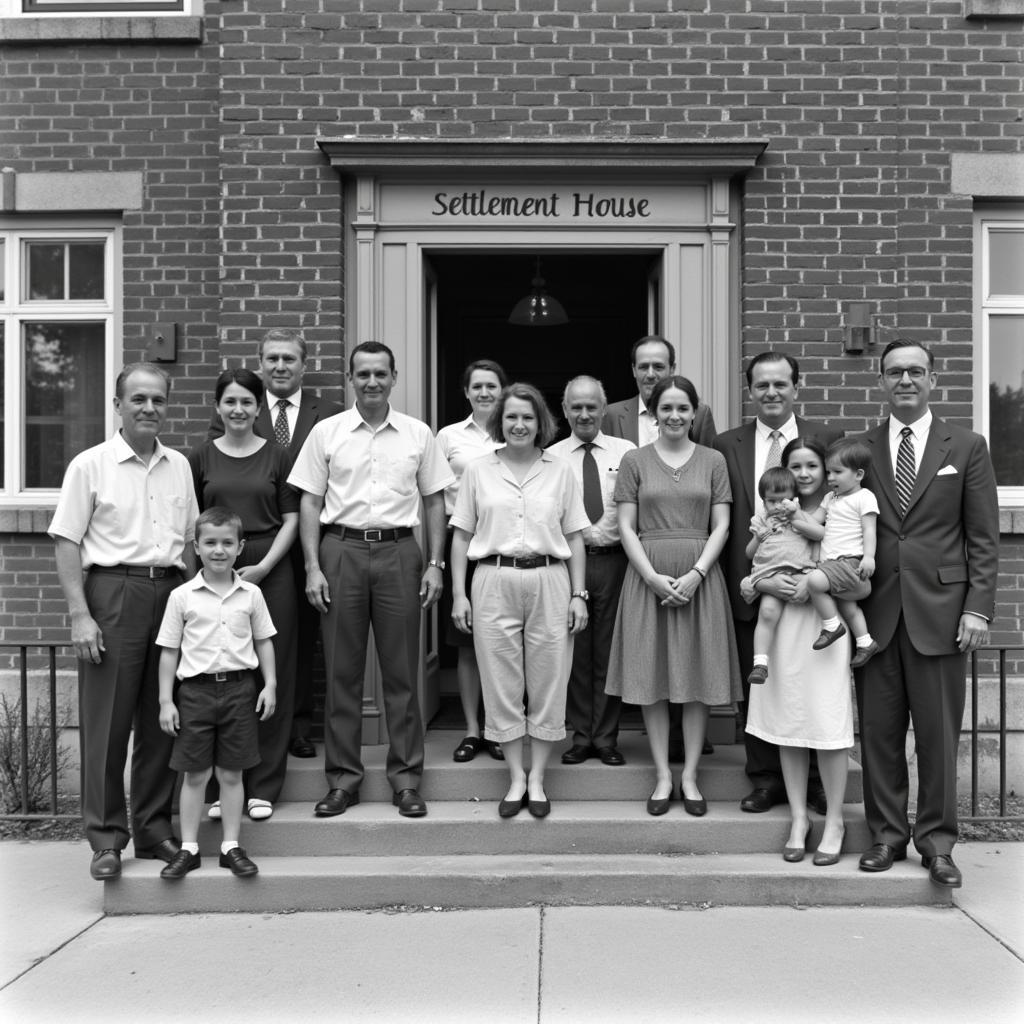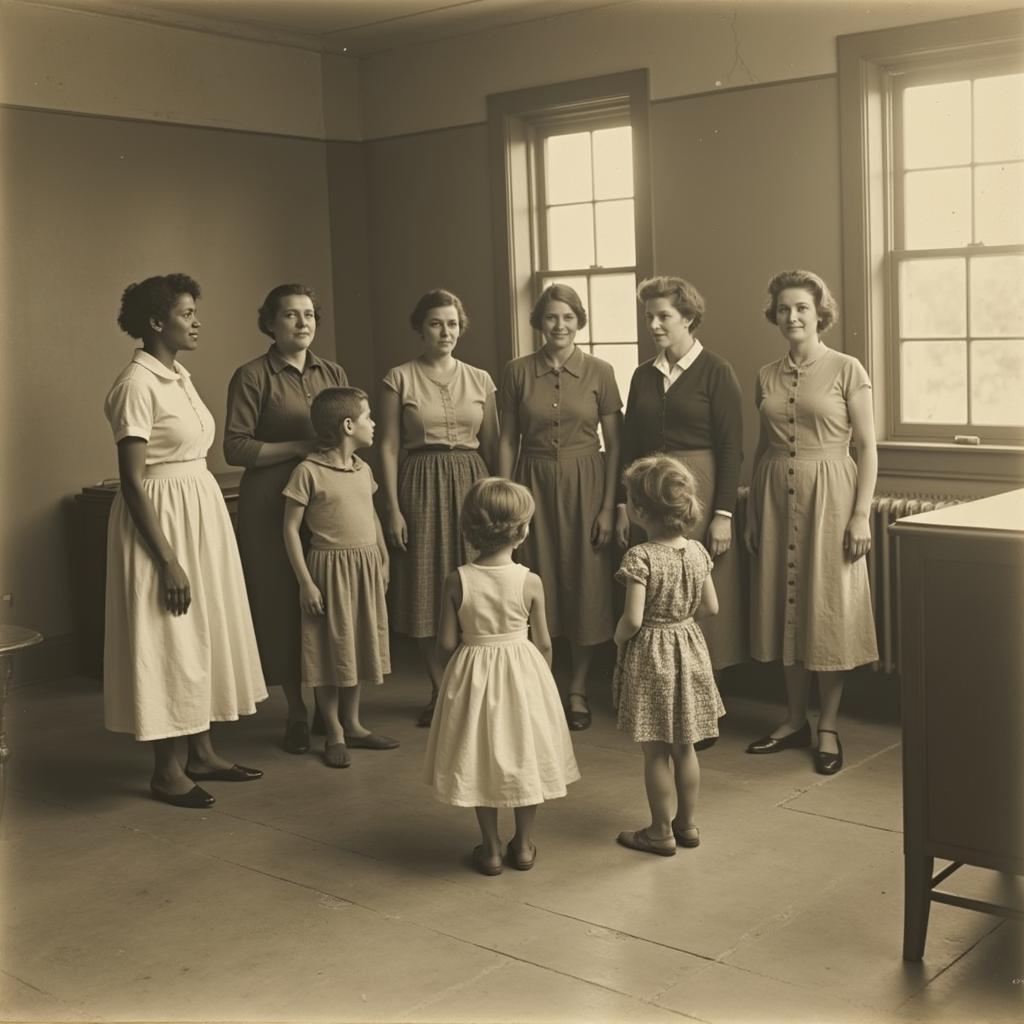The emergence of Charity Organization Societies And Settlement Houses in the late 19th and early 20th centuries marked a turning point in social welfare efforts. Driven by a shared concern for the plight of the urban poor, these organizations, though distinct in their approaches, played pivotal roles in addressing poverty, inequality, and social injustice.
A Tale of Two Approaches: Charity Organization Societies vs. Settlement Houses
While united by a common goal of aiding the less fortunate, charity organization societies and settlement houses differed significantly in their methodologies and underlying philosophies.
Charity Organization Societies: Efficiency and Scientific Charity
Championing a scientific approach to philanthropy, charity organization societies aimed to streamline aid distribution and eradicate inefficiency and duplication. They believed that indiscriminate charity contributed to dependency and that a systematic, investigative approach was crucial for identifying the “deserving poor.”
Key features of charity organization societies included:
- Centralized Coordination: They aimed to coordinate relief efforts among existing charities, preventing overlap and ensuring resources reached those in genuine need.
- Thorough Investigation: Caseworkers rigorously investigated applicants to determine the legitimacy of their needs and prevent fraud.
- Moral Upliftment: Believing poverty often stemmed from moral failings, they emphasized character building and self-sufficiency through initiatives like thrift savings programs.
Settlement Houses: Community Engagement and Social Reform
In contrast, settlement houses embraced a more holistic, community-centered approach. They viewed poverty as a symptom of broader social ills, such as inadequate housing, low wages, and lack of educational opportunities.
 Residents of a Settlement House
Residents of a Settlement House
Hallmarks of the settlement house movement included:
- Residence in Poor Neighborhoods: Reformers resided directly in impoverished communities, fostering relationships and gaining firsthand understanding of the challenges faced by residents.
- Empowerment through Education and Social Programs: Settlement houses offered a wide range of programs, including English classes for immigrants, vocational training, daycare, and recreational activities.
- Advocacy for Social Change: They actively campaigned for improved living conditions, labor rights, and other social reforms aimed at addressing the root causes of poverty.
A Legacy of Compassion and Social Action
The work of charity organization societies and settlement houses left an enduring legacy on social work and the fight for social justice.
Charity organization society and settlement house movement had a profound impact, shaping modern social work practices, advocating for social reform, and inspiring generations of activists and reformers.
Their efforts highlighted the importance of:
- Addressing both the symptoms and root causes of poverty: While immediate relief is essential, tackling systemic issues like inequality and lack of access to opportunities is crucial for sustainable change.
- Community engagement and empowerment: Solutions are most effective when developed in collaboration with the communities they aim to serve.
- Advocating for social justice: Speaking out against injustice and working to create a more equitable society is fundamental to achieving lasting positive change.
Continuing the Conversation: FAQs
-
What were the main criticisms of charity organization societies?
Critics argued that their emphasis on investigation and moral judgment was dehumanizing and that their focus on individual failings ignored the systemic factors contributing to poverty.
-
How did settlement houses differ from charity organization societies in their view of poverty?
Settlement houses saw poverty as a consequence of social injustice and systemic inequalities rather than individual moral failings.
 Settlement House Workers Engaging with Children
Settlement House Workers Engaging with Children
-
What were some of the lasting impacts of the settlement house movement?
The movement led to the professionalization of social work, inspired numerous social reforms, and laid the groundwork for community organizing and advocacy efforts that continue today.
-
Did charity organization societies and settlement houses ever collaborate?
While their approaches differed, there were instances of collaboration, particularly during times of crisis when a united front was needed to address widespread need.
-
Are there modern-day equivalents of charity organization societies and settlement houses?
Many contemporary non-profit organizations and social service agencies embody aspects of both movements, combining direct service provision with advocacy and community organizing efforts.
Join the Movement for a More Just World
The efforts of charity organization societies and settlement houses serve as a powerful reminder that creating a more equitable and compassionate world requires a multifaceted approach. By understanding the historical context of social welfare efforts, we can draw valuable lessons for addressing present-day challenges and continue the fight for social justice.
For support, contact us at Phone Number: 02043854663, Email: [email protected] or visit us at Zone 34, Bac Giang, 260000, Vietnam. Our customer service team is available 24/7.